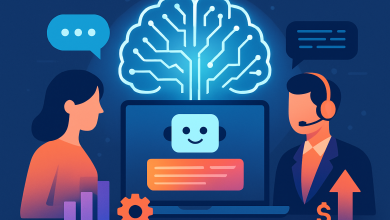
Over the past year, conversations around AI have been dominated by hardware. The industry has been focused on GPUs, data center expansions, and the infrastructure race to train larger models. However, while the noise has been heavily focused on upgrading silicon, a quieter bottleneck has been holding back and reshaping the trajectory of AI: data.
And not just any data, but access to quality, multimodal, fresh, and responsibly sourced information. As AI systems evolve, their appetite for data doesn’t just grow, it changes. While bigger models and faster chips will be essential to push progress, they are meaningless without the right fuel.
The next frontier goes beyond text
Scraping the public internet for text is no longer enough to train models. Modern AI is expected to do far more than summarization or autocomplete sentences. It must be able to generate code, videos, images, and work seamlessly across an increasing number of modalities present in the physical world.
That means their inputs must go beyond plain text. Speech recordings, high-resolution images, video clips, code repositories, telemetry streams, and even sensor data are becoming critical components of the training pipeline. AI goes beyond just a language model. It’s a world model, one that demands exposure to the full spectrum of human and machine experiences.
None of that matters without quality, though. Not all information is created equal, and duplicated datasets can introduce bias, hallucinations, and errors at scale. Deduplication, domain balancing, and careful filtering are now production-level concerns. A small amount of bad data in a large training set can cause a model to make mistakes.
Crossmodal grounding is especially critical. Aligning a spoken phrase with the exact video frame it describes, or linking a snippet of code to the behavior it triggers, enables models to build richer and more reliable representations of reality. The goal isn’t just better benchmark scores, it’s building systems that reason more deeply, adapt more flexibly, and understand context more like humans do.
The power of rare data
Often, the most transformative datasets are the smallest. Minority languages, niche domains, and rare edge cases may seem insignificant in terms of raw volume, but they can deliver disproportionate performance gains.
A small, meticulously annotated dataset of medical dialogues or legal cases can improve performance more than terabytes of generic web text. This is especially true in vertical AI applications, where general-purpose models tend to fall short.
The challenge is that this kind of data is expensive and time-consuming to collect. It often requires domain experts, careful curation, and ongoing refinement. But for teams willing to invest, the payoff is tremendous.
The shelf life of data
Even the best data has a shelf life. Culture shifts, facts change, and markets evolve. What was accurate and representative six months ago may already be outdated today.
Models trained on old data gradually become less relevant. In contrast, systems that incorporate current, verified information remain grounded and practical. Freshness, like quality, should be considered a core property of data, not an optional add-on. Just as computing is monitored for efficiency or model accuracy, organizations should measure how current their training signals are.
The cadence at which data is updated is now just as important as the amount that exists. Real-time or near-real-time data ingestion is particularly crucial for applications such as news summarization, financial forecasting, and dynamic decision-making. Without updated information, even the most sophisticated model risks becoming a very expensive history book.
The growing wall around the open web
Compounding this problem is the increasing difficulty of accessing the very data AI needs. The once-open internet is now fragmented by paywalled APIs, aggressive rate limits, pay-per-crawl or RSL-style licensing, hardened robots.txt, CDN/proxy bot walls, and other legal hurdles. Search engines and content platforms are tightening access, and many sites are actively blocking automated scraping.
This shift benefits the largest players, those who have the resources to negotiate licenses and maintain compliance teams. Smaller startups, independent researchers, and open-source projects often get left behind, not because of a lack of innovation, but because of a lack of access.
This contradicts the original intention for the open web. As the concentration of power narrows, it risks undermining the diversity of perspectives that shape the next generation. With only a handful of companies capable of training truly cutting-edge models, we lose the competitive and cultural benefits of a more open ecosystem. Advocating for accessible, responsibly shared data is crucial to maintaining a healthy and innovative AI landscape.
Data is the new AI frontier
Compute will always matter. Scaling laws still favor larger clusters, even with efficiency enhancements like sparsity and distillation. However, the real competitive edge now lies in data: its richness, freshness, and ability to accurately reflect the complexity of the real world. They will draw on multiple modalities, stay in sync with reality, and learn from underrepresented signals that others overlook.
AI companies that master multimodal pipelines, continuously refreshed streams, and overlooked long-tail signals will shape the industry. Those that don’t, regardless of how many GPUs they have, will end up with powerful models trained on outdated data. Impressive in scale, but limited in substance.
About Tim:
Tim Sprecher is the Co-founder of Hub.xyz. He began his entrepreneurial career at 18, founding his first company and quickly developing a track record for building and scaling high-performing digital ventures. Over the years, he has designed and implemented systems that drive rapid customer acquisition and sustained operational efficiency. Tim has also served as an advisor to multiple organizations, from tech startups to VC firms, helping them unlock growth, streamline processes, and achieve measurable performance at scale.





